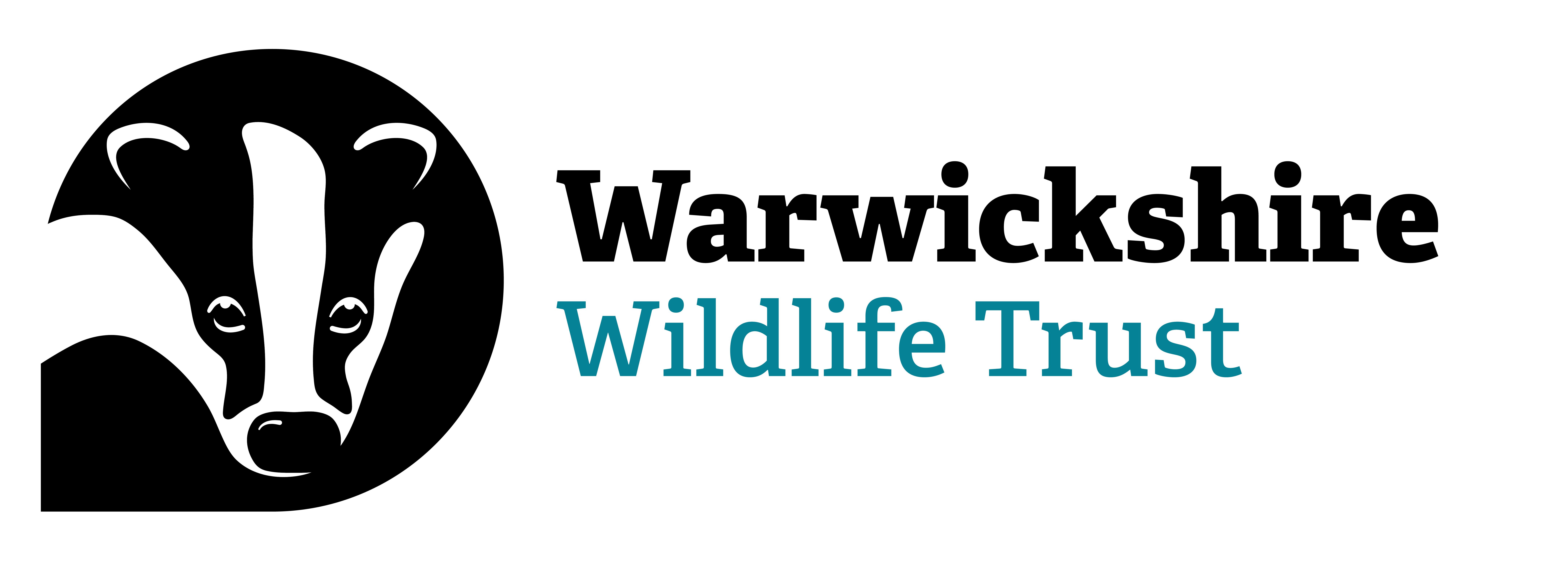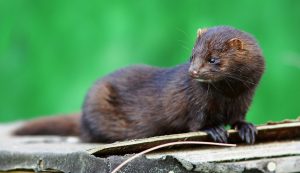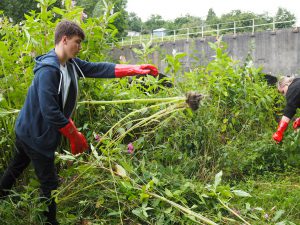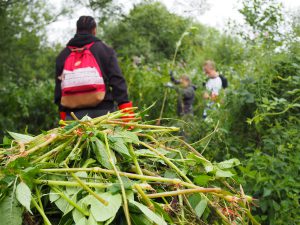This week is Invasive Species Week, hosted by NNIS (Non-native invasive species). Would like to know more about them specifically? Pop over to their website here – NNIS
The agenda for Invasive Species Week and how you can get involved!:
Monday – Welcome to Invasive Species Week!
Tuesday – Biosecurity
Wednesday – Identification and recording
Thursday – Local Action Groups
Friday – Other projects
Monday – Welcome to Invasive Species Week!
This week is non-native species week. There are a number of non-native species which are found in the Tame Valley Wetlands area. These species have a devastating effect on our local flora and fauna which affects the balance of our native ecosystem.
Some of these species you will know as grey squirrel, American mink, Signal Crayfish, Plants:- Himalayan Balsam, Japenese Knotweed, Giant Hogweed, floating pennywort, new Zealand pygmy weed, Asian hornet.
If you want to find out more about these species and their negative effect on our environment, visit www.nonnativespecies.org for helpful identification guides and measures you can put in place to prevent the spread of them and educate others.
Tuesday – Biosecurity
Biosecurity measures on sites where there are known non-native species are essential to prevent the spread of them in the environment. Non-native species can unknowingly be transported from one waterbody to another. One easy and simple measure to put in place is to follow the Check Clean Dry campaign. http://www.nonnativespecies.org/checkcleandry/index.cfm#
CHECK your equipment and clothing for contamination eg boats, fishing equipment, wellies, tyres on vehicles (hard to reach places).
CLEAN your equipment thoroughly onsite with clean water, if you find any organisms, leave them at the waterbody where they were found.
DRY your equipment thoroughly before visiting another site. Some organisms can live for days in moist conditions.
Remember: Check Clean Dry
Why not use the free e-learning module on biosecurity found here http://www.nonnativespecies.org/elearning/
Wednesday – Identification and recording
It is important to identify and record non-native species in the Tame Valley Area. This helps us track their spread and more importantly, work on management plans to aid removal and put in control measures. There are some excellent Identification tools online at www.nonnativespecies.org including species fact sheets and free e-learning tool.
Your County Biological Record Centre would also like to know these records. There are three record centres in the Tame Valley Wetlands depending on where you have seen them:-
Warwickshire https://www.warwickshire.gov.uk/
Staffordshire http://www.staffs-ecology.org.uk/
Birmingham & Black Country http://www.ecorecord.org.uk/
If you use a smart phone, there are good apps available. Search for:
Plant tracker http://www.planttracker.org.uk/
Aquatic Invaders http://www.brc.ac.uk/aquainvaders/home
Thursday – Local Action Groups
There are a number of Tame Valley Wetland Partners that undertake management of non-native species. Why not get involved with a local volunteer group and help out in your local area.
Tame Valley Wetlands – Tameforce (meet every Tuesday)
Natureforce, Warwickshire Wildlife Trust (meet every Wednesday)
Kingsbury Water Park Volunteers, Warwickshire County Council (meet every Friday)
RSPB Middleton Lakes (volunteer work party days, various)
Wild about Tamworth volunteer groups, Staffordshire Wildlife Trust (once a month),
Your local Angling Clubs
Community Environmental Trust, Castle Vale
West Midlands Bird Club members volunteering
Friday – Other projects STILL WRITING THIS – leave this with me….
Tame Valley Wetlands are working on non-native species control in the scheme area. This includes
Himalayan Balsam control.
Simple methods of control:
A simple technique to control this plant species which spreads along the river corridor and active floodplains is to pull it out and is known as ‘balsam bashing’. This activity is done before the plant has time to seed. The plant is an annual and its root system is easily pulled out of the soil. Many local action groups use this method of control. Alternatively, cutting the plant down below the first node ensures the plant does not try to regrow back
Why should we do it:
Himalayan Balsam is a prolific plant that spreads quickly, creating monoculture stands of plants which dominate the river and floodplain environment. The plants grow tall and shade out any native species present. The plant dies back in winter leaving bare soils which are unconsolidated and that can easily enter the water course during flood events. Sediments are not good in the river, they can cover important fish spawning habitat and affect freshwater invertebrates populations as well as introduce nutrients into the watercourse promoting algae and weed growth.
American Mink Control
American mink were liberated in the Tame Valley Wetlands scheme area afew decades ago. The consequence of this unauthorised release was the demise of the local, abundant water vole population. Currently, water voles are not recorded as present in the scheme area but there have been some potential sightings. American Mink are present and are now also affecting the local wetland birds during breeding season and fisheries. To ensure that water voles can return to the area, mink control is a necessary requirement under the UK Water Vole Steering Group policy, agreed by a number of conservation organisations and relevant government agencies.
With Water vole populations close by on the River Anker and the Coventry Canal, we are confident that with improvement of habitats at historical water voles sites and continued mink control, we are confident that water voles will once again, be a regular site in the Tame Valley Wetlands.



